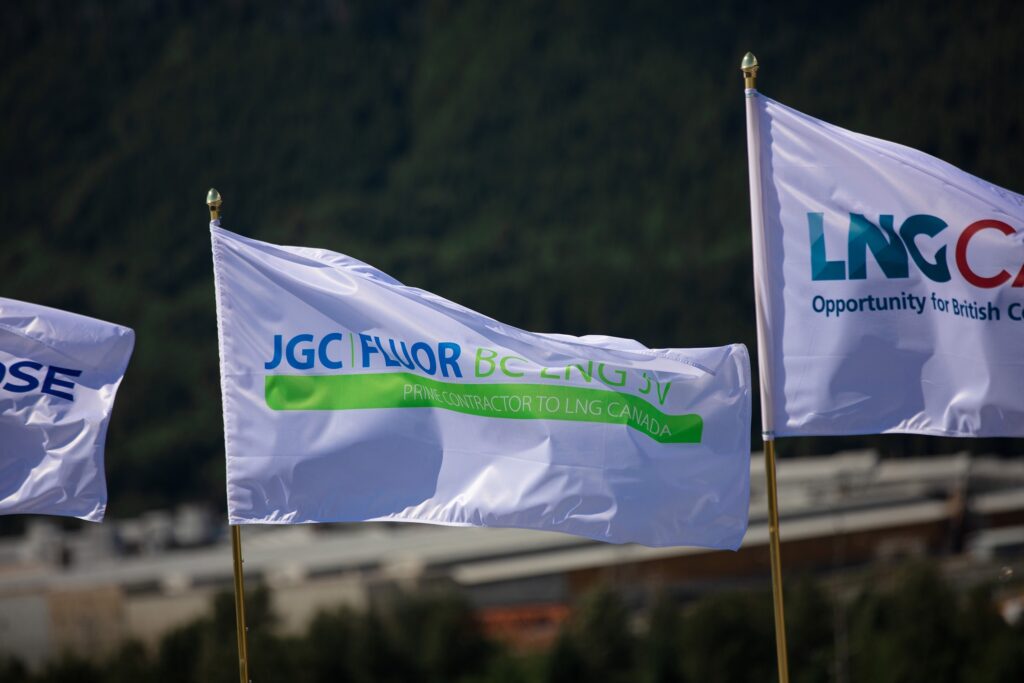BC LNG Industry: A Review Of Five Major Projects And Their Current Status

Table of Contents
British Columbia (BC) possesses significant natural gas reserves, positioning it as a potential global LNG (Liquefied Natural Gas) exporter. However, the development of LNG projects in BC has been a complex journey, marked by both significant progress and considerable hurdles. Factors such as global market fluctuations, environmental regulations, and Indigenous consultation have all played a role in shaping the landscape of BC's LNG sector. This article reviews five major BC LNG projects, examining their current status, challenges, and future prospects, providing a comprehensive overview of the BC LNG industry.
Project 1: LNG Canada
Project Overview:
LNG Canada is a joint venture between Shell, Petronas, Mitsubishi Corporation, and PetroChina. Located in Kitimat, British Columbia, it's one of the largest LNG export facilities in the world. The project boasts a train capacity designed to produce approximately 14 million tonnes of LNG per annum. This massive undertaking involves significant infrastructure development, including pipelines, processing facilities, and marine terminals.
Current Status:
LNG Canada is currently operational. Construction, a monumental effort employing thousands, was completed in 2025. The facility has already begun exporting LNG, marking a significant milestone for BC's energy sector and contributing substantially to the provincial and national economy.
- Key infrastructure components: Two LNG trains, pipelines connecting to the gas fields, a marine terminal capable of accommodating large LNG carriers, and extensive supporting infrastructure.
- Employment figures and economic impact on the region: The project created thousands of jobs during construction and continues to provide numerous employment opportunities through operations and ongoing maintenance. The economic impact on the Kitimat region and British Columbia as a whole has been substantial.
- Environmental impact assessment and mitigation strategies: LNG Canada undertook a comprehensive environmental impact assessment and implemented various mitigation strategies to minimize its environmental footprint. This included measures to protect air and water quality, as well as biodiversity.
- Regulatory approvals and permits: The project secured all necessary regulatory approvals and permits from both federal and provincial governments.
Project 2: Woodfibre LNG
Project Overview:
Woodfibre LNG is a smaller-scale LNG export project situated near Squamish, BC. Owned by Pacific Energy, this project focuses on efficiency and lower carbon emissions. It has a planned capacity of approximately 2.1 million tonnes per annum.
Current Status:
Woodfibre LNG is operational, having commenced production. The project's relatively smaller size allowed for a faster development timeline compared to some of the larger projects in the province.
- Key infrastructure components: A single LNG train, a dedicated marine terminal, and associated pipelines.
- Employment figures and economic impact on the region: While smaller than LNG Canada, the project still provides significant employment opportunities in the Squamish area and contributes to the BC economy.
- Environmental impact assessment and mitigation strategies: Environmental concerns were addressed through a comprehensive assessment and mitigation plan focusing on reducing the project’s carbon footprint.
- Regulatory approvals and permits: Woodfibre LNG obtained all necessary regulatory approvals and permits to proceed with construction and operation.
Project 3: Kitimat LNG (Cancelled)
Project Overview:
Kitimat LNG was a proposed LNG export project planned for Kitimat, BC. It was a large-scale venture with a significant planned production capacity.
Current Status:
The Kitimat LNG project is currently cancelled. The project faced numerous challenges, including securing long-term gas supply agreements and obtaining necessary regulatory approvals in a timely manner. The fluctuating global LNG market also played a substantial role in the project's cancellation.
- Reasons for project delays and cancellation: Challenges securing financing, regulatory hurdles, and changes in global LNG market dynamics all contributed to the project’s eventual cancellation.
- Impact of market conditions on the project's feasibility: Shifting global demand for LNG and price volatility made the project less economically viable.
- Lessons learned from the project's experience: The cancellation highlighted the importance of securing stable long-term gas supply contracts and the need for careful analysis of global market trends.
Project 4: Pacific NorthWest LNG (Cancelled)
Project Overview:
Pacific NorthWest LNG was another proposed large-scale LNG export project in BC. It aimed to establish a significant LNG export terminal.
Current Status:
The Pacific NorthWest LNG project was cancelled. Similar to Kitimat LNG, challenges related to regulatory approvals, market conditions, and Indigenous consultation were significant factors that contributed to this outcome.
- Reasons for project delays and cancellation: Prolonged regulatory review processes, challenges in securing financing, and fluctuating market demand for LNG ultimately led to the cancellation.
- Impact of market conditions on the project's feasibility: Changes in the global energy landscape significantly impacted the project's economics, rendering it less attractive to investors.
- Lessons learned from the project's experience: The experience underscores the need for robust environmental impact assessments, effective Indigenous consultation, and careful market analysis.
Project 5: Cedar LNG (Proposed)
Project Overview:
Cedar LNG is a proposed LNG export project under development. The project aims to provide a reliable supply of LNG to international markets.
Current Status:
Cedar LNG is currently in the planning stages, with feasibility studies underway. The project's progress is contingent upon securing necessary financing, regulatory approvals, and long-term gas supply agreements.
- Reasons for project delays (if any): Securing all necessary permits and agreements are key to progression, with the process prone to delays as is common within large-scale energy projects.
- Impact of market conditions on the project's feasibility: The evolving global LNG market and its associated price volatility continue to influence the project's development.
- Lessons learned from previous projects: The experience of other LNG projects in BC, including both successes and failures, will inform the development strategy of Cedar LNG.
Conclusion:
The BC LNG industry has witnessed a mixed bag of successes and setbacks. While projects like LNG Canada and Woodfibre LNG are operational, demonstrating the potential for successful large-scale LNG production, other ventures have faced challenges leading to cancellations. These cancellations highlight the complexities of navigating regulatory approvals, securing financing, and responding to fluctuating global energy markets. The future of BC LNG development hinges on a number of factors including continued Indigenous consultation, addressing environmental concerns, and ensuring that projects align with global market realities. The projects currently in progress show the continued potential of the BC LNG industry, but success will depend on a careful balancing act.
Call to Action: Stay informed about the evolving landscape of the BC LNG industry. For further insights into BC LNG projects and their future, continue your research and explore [link to relevant resources, government websites etc.]. Learn more about the dynamic world of BC LNG development.

Featured Posts
-
 How Long Can Manila Bay Remain Vibrant
May 30, 2025
How Long Can Manila Bay Remain Vibrant
May 30, 2025 -
 Ufc Veteran Calls For 29 Million Payday For Jon Jones
May 30, 2025
Ufc Veteran Calls For 29 Million Payday For Jon Jones
May 30, 2025 -
 Spesifikasi Dan Harga Kawasaki Ninja 500 And 500 Se 2025 Rp100 Juta Lebih
May 30, 2025
Spesifikasi Dan Harga Kawasaki Ninja 500 And 500 Se 2025 Rp100 Juta Lebih
May 30, 2025 -
 Kasper Dolbergs Malpotentiale 35 Mal I En Saeson Mulig Eller Umuligt
May 30, 2025
Kasper Dolbergs Malpotentiale 35 Mal I En Saeson Mulig Eller Umuligt
May 30, 2025 -
 2027 Jacobelli Denonce Une Tentative D Empecher La Candidature De Marine Le Pen
May 30, 2025
2027 Jacobelli Denonce Une Tentative D Empecher La Candidature De Marine Le Pen
May 30, 2025
